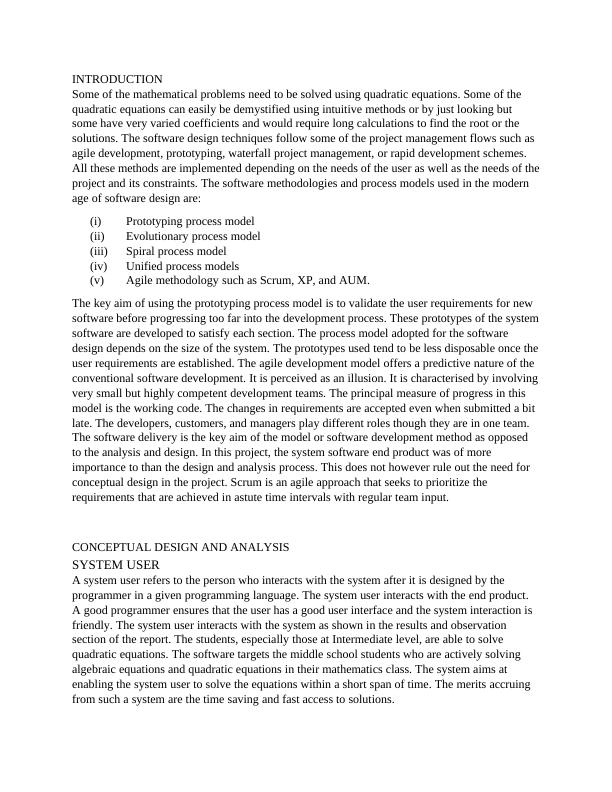Quasi-Quasi-Structured Systems: Design and Analysis
Added on 2020-03-07
9 Pages1215 Words203 Views
[DOCUMENT TITLE][Document subtitle]Submitted To Submitted By

TABLE OF CONTENTSTABLE OF CONTENTS............................................................................................................................2INTRODUCTION.......................................................................................................................................3CONCEPTUAL DESIGN AND ANALYSIS.............................................................................................3SYSTEM USER......................................................................................................................................3SOFWARE DESIGN CONTENT...........................................................................................................4INTERFACE DESIGN............................................................................................................................4RESULTS AND OBSERVATION.............................................................................................................5DISCUSSION.............................................................................................................................................5REFERENCES............................................................................................................................................5References...................................................................................................................................................9

INTRODUCTIONSome of the mathematical problems need to be solved using quadratic equations. Some of the quadratic equations can easily be demystified using intuitive methods or by just looking but some have very varied coefficients and would require long calculations to find the root or the solutions. The software design techniques follow some of the project management flows such as agile development, prototyping, waterfall project management, or rapid development schemes. All these methods are implemented depending on the needs of the user as well as the needs of theproject and its constraints. The software methodologies and process models used in the modern age of software design are: (i)Prototyping process model(ii)Evolutionary process model(iii)Spiral process model(iv)Unified process models(v)Agile methodology such as Scrum, XP, and AUM.The key aim of using the prototyping process model is to validate the user requirements for new software before progressing too far into the development process. These prototypes of the systemsoftware are developed to satisfy each section. The process model adopted for the software design depends on the size of the system. The prototypes used tend to be less disposable once theuser requirements are established. The agile development model offers a predictive nature of the conventional software development. It is perceived as an illusion. It is characterised by involvingvery small but highly competent development teams. The principal measure of progress in this model is the working code. The changes in requirements are accepted even when submitted a bit late. The developers, customers, and managers play different roles though they are in one team. The software delivery is the key aim of the model or software development method as opposed to the analysis and design. In this project, the system software end product was of more importance to than the design and analysis process. This does not however rule out the need for conceptual design in the project. Scrum is an agile approach that seeks to prioritize the requirements that are achieved in astute time intervals with regular team input. CONCEPTUAL DESIGN AND ANALYSISSYSTEM USERA system user refers to the person who interacts with the system after it is designed by the programmer in a given programming language. The system user interacts with the end product. A good programmer ensures that the user has a good user interface and the system interaction is friendly. The system user interacts with the system as shown in the results and observation section of the report. The students, especially those at Intermediate level, are able to solve quadratic equations. The software targets the middle school students who are actively solving algebraic equations and quadratic equations in their mathematics class. The system aims at enabling the system user to solve the equations within a short span of time. The merits accruing from such a system are the time saving and fast access to solutions.

End of preview
Want to access all the pages? Upload your documents or become a member.
Related Documents
Agile Methodologies for Software Development: A Case Study of Australian Fashion Design Softwarelg...
|18
|2733
|317
Agile and Iterative Methodologies: A Reportlg...
|14
|2638
|469
Project Management Methodologieslg...
|9
|1681
|92
System Analysis and Designlg...
|17
|2006
|32
Agile Methodologies for Software Development: A System Analysislg...
|15
|2683
|90
System Analysis and Design for Free Feet Socks Limitedlg...
|12
|2493
|80
